Soft and fluffy sourdough sandwich bread is the perfect bread to have on hand. Made with all purpose flour, sourdough starter, butter and a little honey, this fermented bread has a lighter texture and tangy flavor.
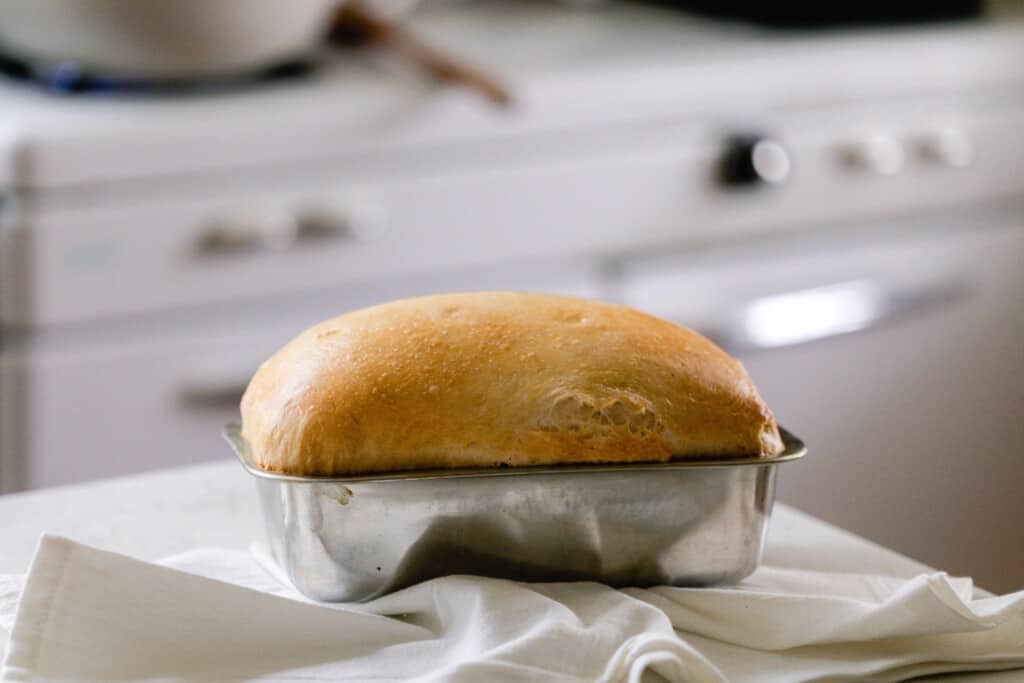
One of the main complaints I hear about making crusty sourdough from readers is that they miss the soft sandwich loaf style of bread.
Not only is this recipe absolutely delicious (making it really hard to ever go back to store-bought bread), but it is also super simple. No strange ingredients, no stretching and folding every 30 minutes… Just mix, rise, shape, rise again, and bake.
Let it cool, slice and slather it with butter. It’s so yummy and it reminds me of a bread you would get on a breadboard from a restaurant.
Let’s be honest, though, it’s way better since it’s made from scratch and has that wonderful sourdough tang.
Make sure to save this sourdough loaf bread recipe for the future. It will be a go to for sure.
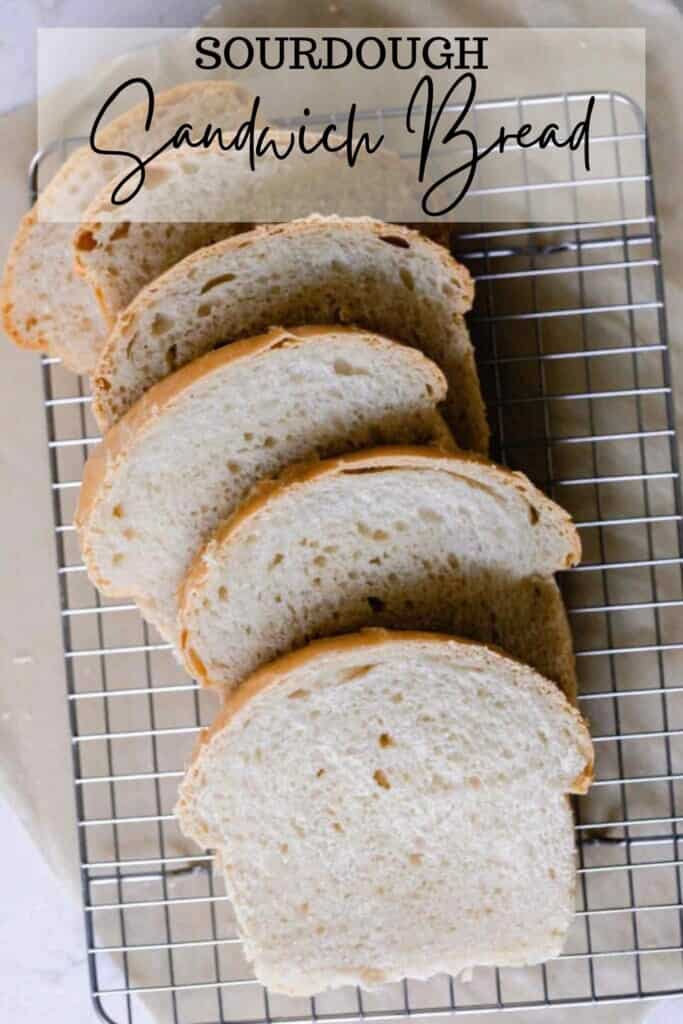
Tips:
- Use really soft butter and cube it up so it blends easier.
- Don’t over ferment the dough. It will turn into a wet sloppy disaster that won’t rise well. Still edible. Maybe. It could also be turned into sourdough croutons.
- When making the dough, using a stand mixer makes the process much easier and hands off. You can also do this with your hands.
- If you are new to sourdough, you can check out how to make a sourdough starter here, find my sourdough conversion chart, and baking glossary of terms.
This post contains affiliate links, which means I make a small commission at no extra cost to you. See my full disclosure here.
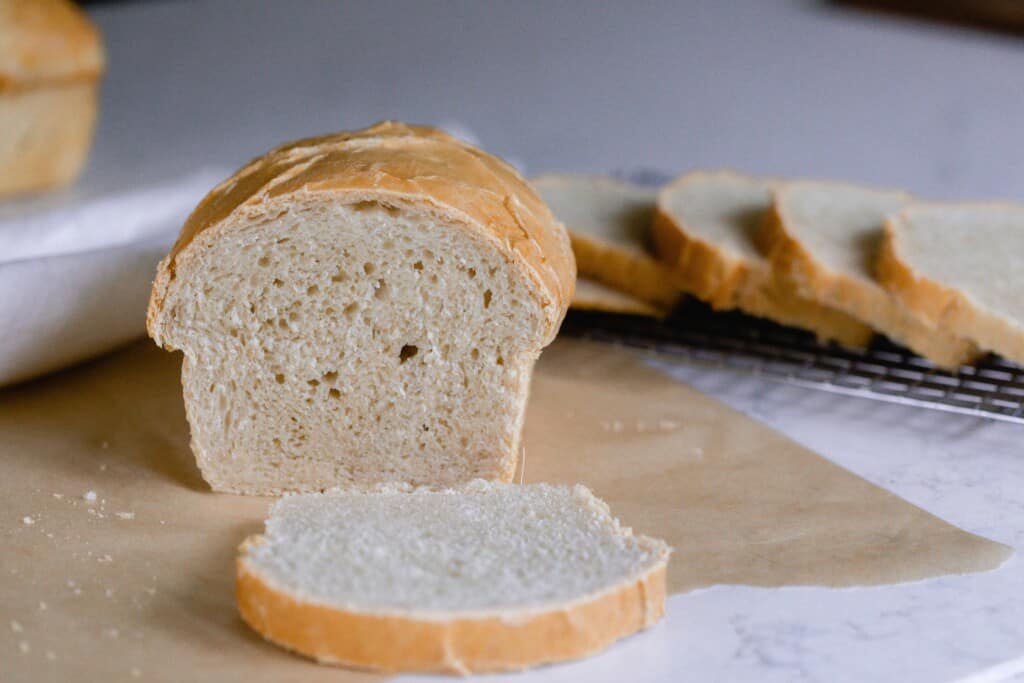
Tools you may need:
Measuring cups and spoons. You could also use a kitchen scale
FAQ:
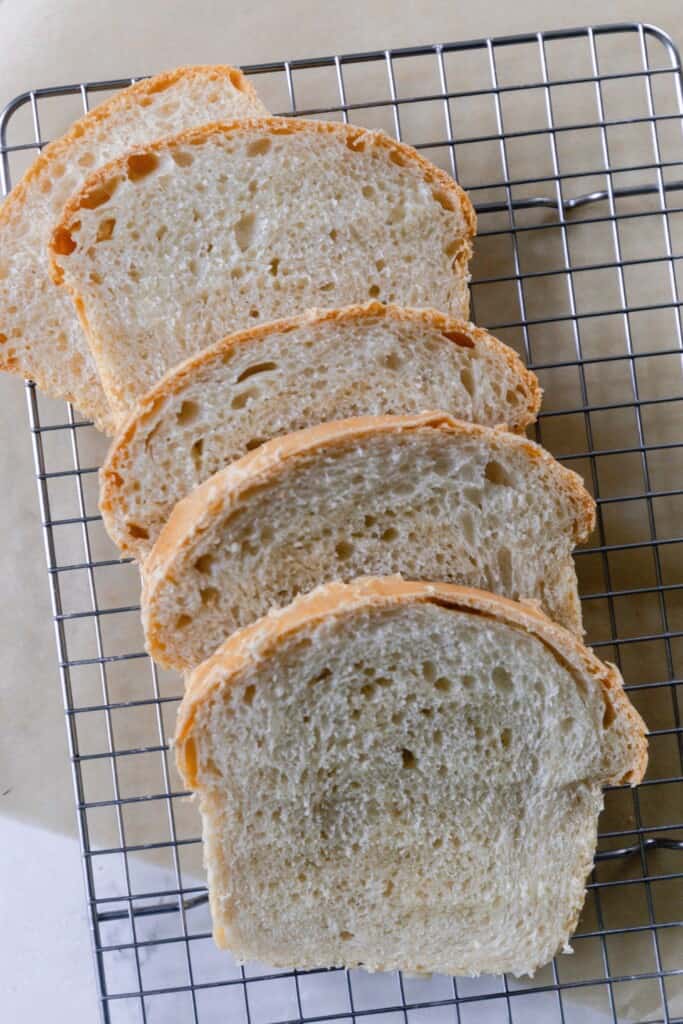
Does sourdough bread make good sandwiches?
Yes. The delightful tanginess adds to the flavor profile of the sandwich, making it a wonderful addition. You can use crusty sourdough bread or this soft sourdough sandwich loaf.
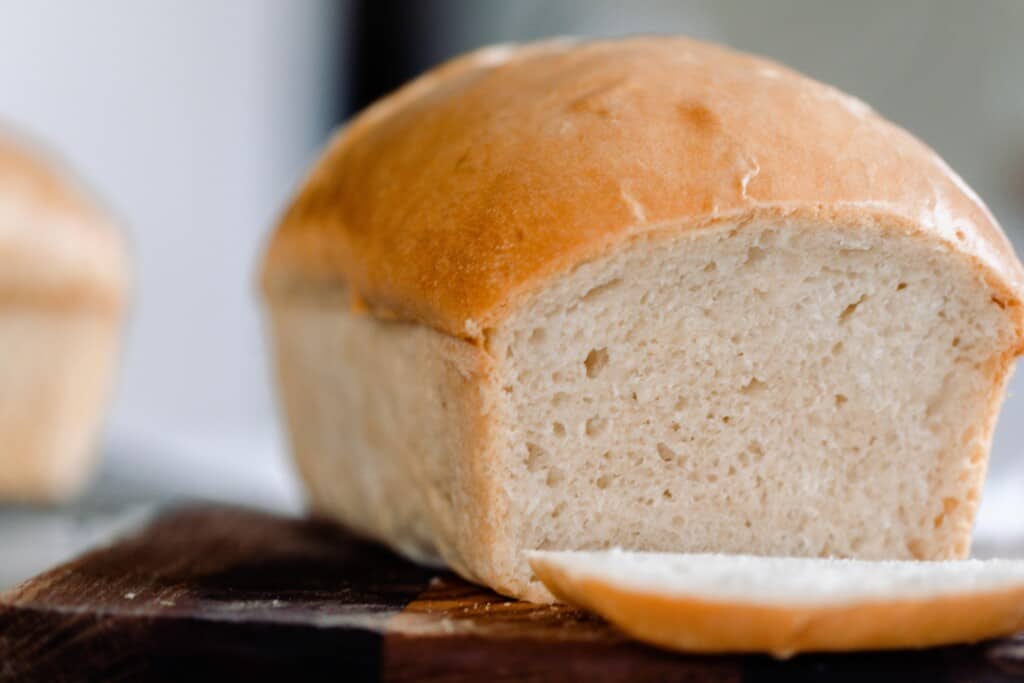
Why is my sourdough sandwich bread not rising?
There could be a few reasons for this. The most likely one is that your sourdough starter may not be active enough or is weak.
Another contributor could be the temperature of the room where you are placing your dough to rise. The cooler the temperature the longer it will take for bread to rise.
Lastly, the water you use in your dough mixture could be a factor. If the water used was too hot, it may have killed the starter. Additionally, if you are using city water the chlorine could potentially kill the yeasts in the starter.
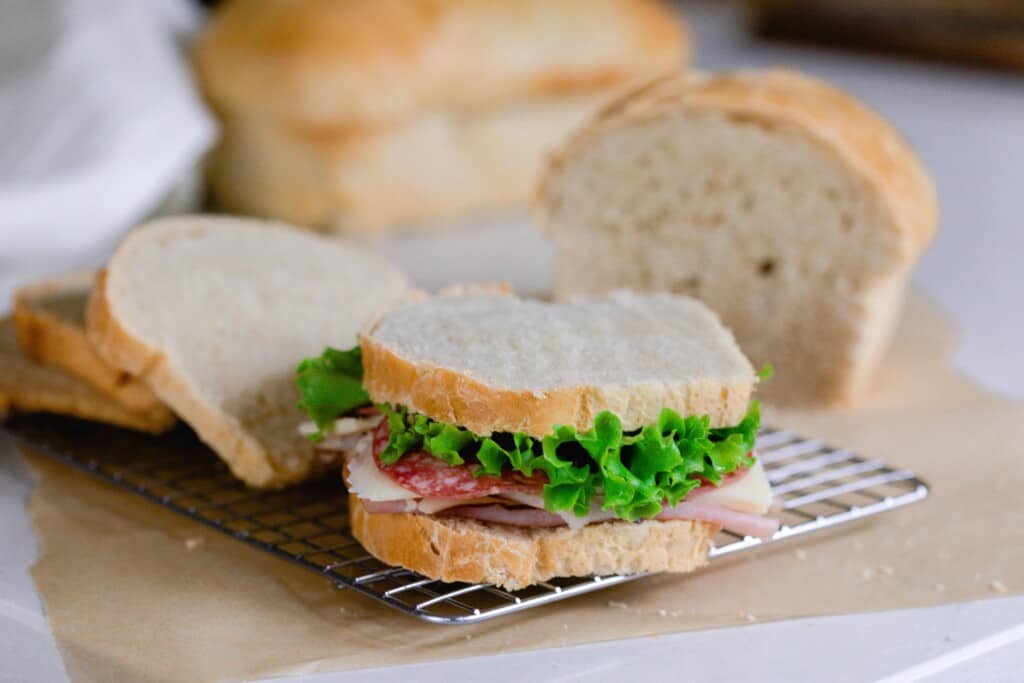
Are sourdough sandwiches healthy?
Sourdough is one of the healthiest breads since the grains are fermented, which makes it more digestible and the nutrients more available for your body to absorb.
Top with your favorite healthy toppings and you can have a wholesome and filling meal in one sandwich.
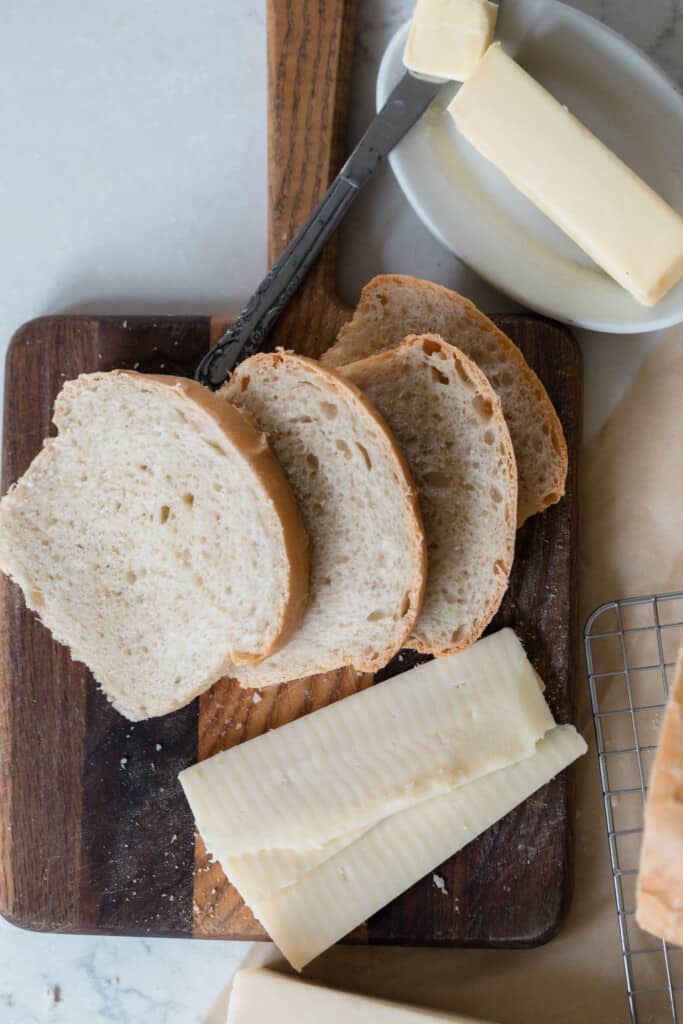
Ingredients:
Butter (softened) or coconut oil – I prefer using butter for that savory buttery flavor. If you are wanting to make a vegan version, you can use softened (not melted) coconut oil.
Honey or sugar – I like to use honey since it is a natural sweetener.
Salt – This gives the bread so much flavor and skipping it will leave you with a tasteless loaf.
Sourdough starter – You want a nice active and bubbly starter to make bread. Starter that isn’t ripe won’t produce nice fluffy bread.
Water – Room temperature.
All-purpose flour – The best part of this recipe is that it uses good ol’ plain all-purpose flour. Nothing fancy.
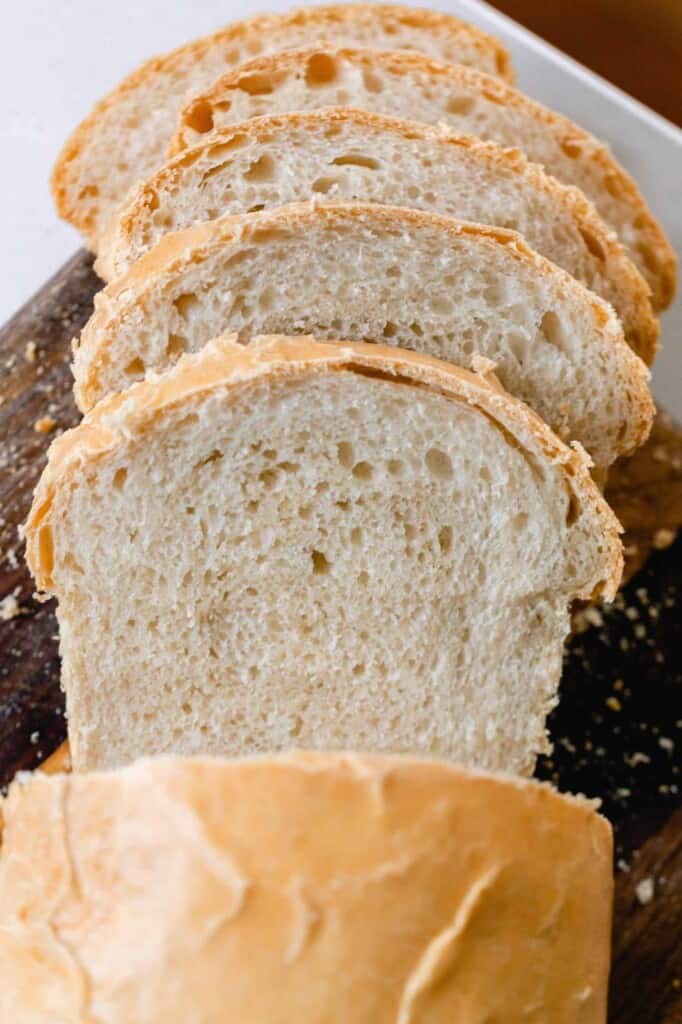
How To Make Sourdough Sandwich Bread
To a stand mixer, add all of the ingredients. I like to add the flour last, so I can add a bit less or more depending on my starter’s hydration.
Knead until dough is stretchy and smooth. You want it to pull away from the sides of the mixing bowl and be smooth and elastic – about 10 minutes. It should pass the windowpane test. Grab a small ball of the dough and stretch it into a square. It should stretch thin enough to see through without breaking.
Tip: This isn’t a super hydrated dough and won’t be very wet like other doughs.
Allow to bulk rise for 10-12 hours in a warm place like on top of a stove or refrigerator. You can go longer if you want the benefit of the fermentation, but if it gets over-proofed the dough will turn into a sloppy mess!
In the summer, I ferment mine more like 8 hours but can get away with longer in the colder months.
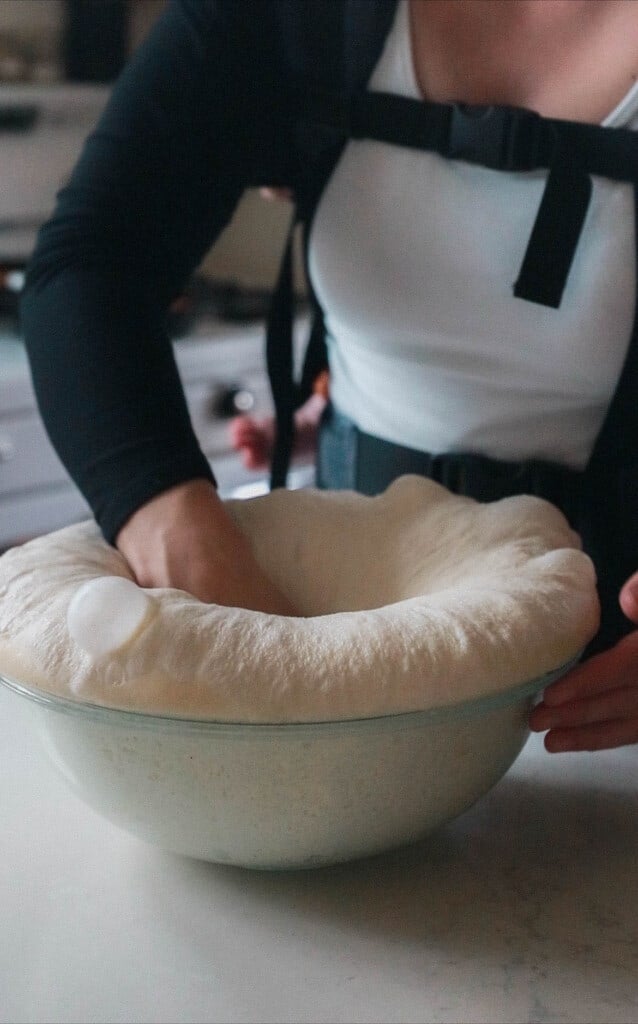
Shape The Loaves And Rise
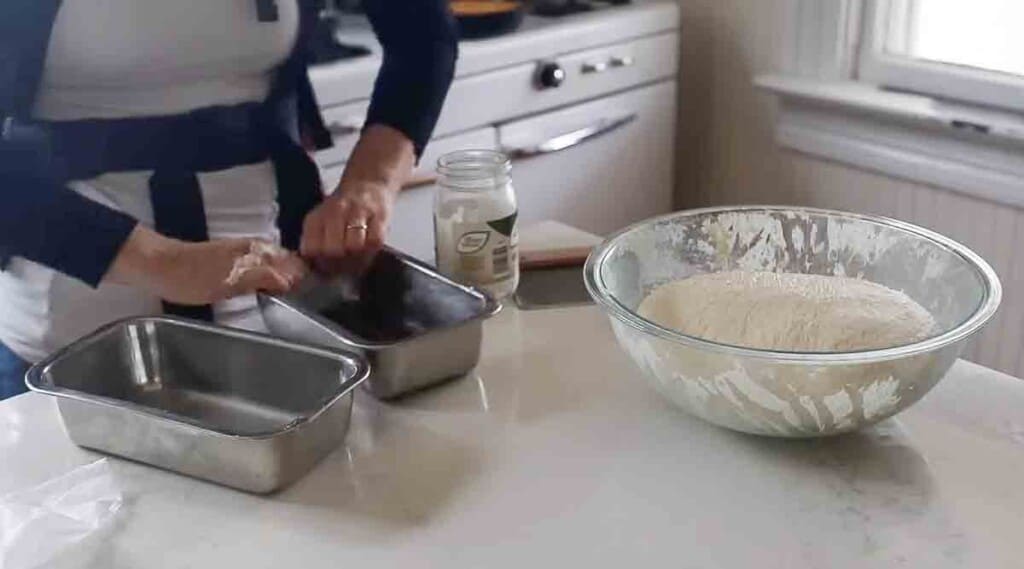
Grease two loaf pans or add parchment paper.
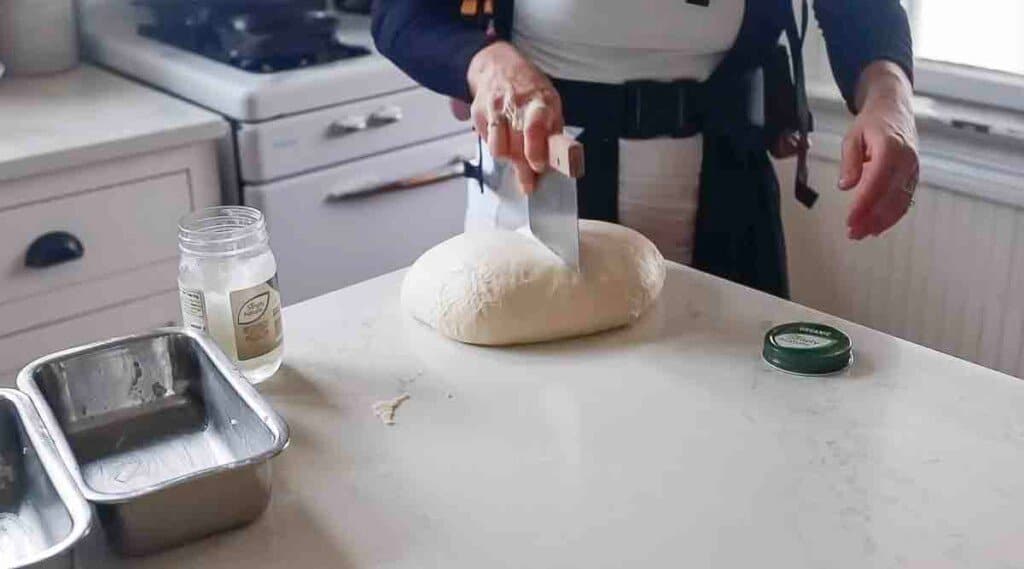
Divide in two equal parts.
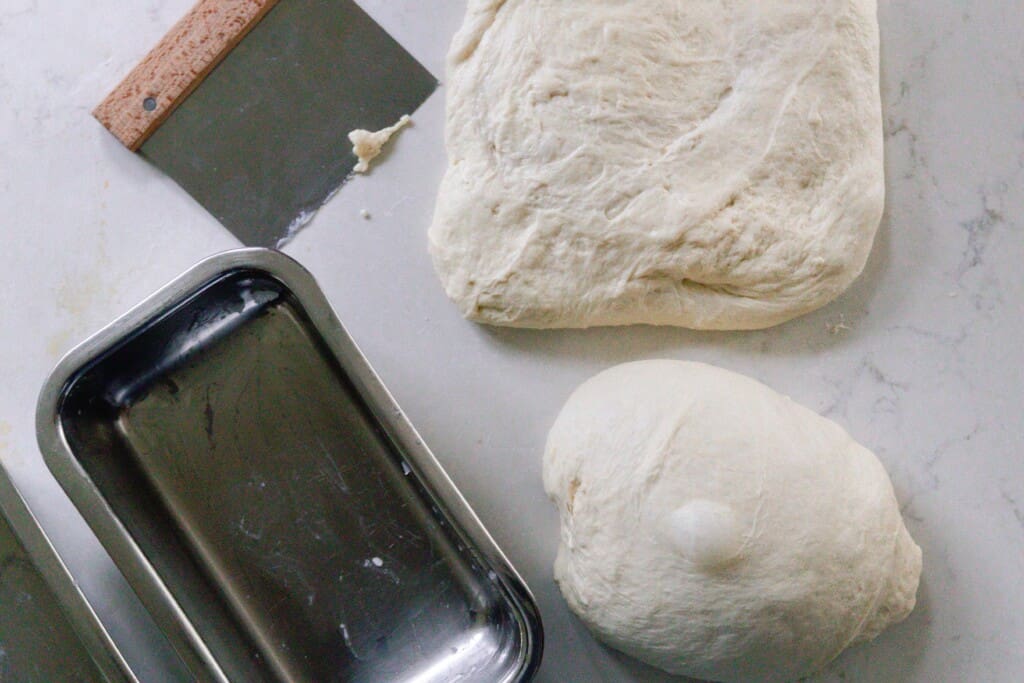
Shape by rolling the dough flat into a rectangle and rolling it up.
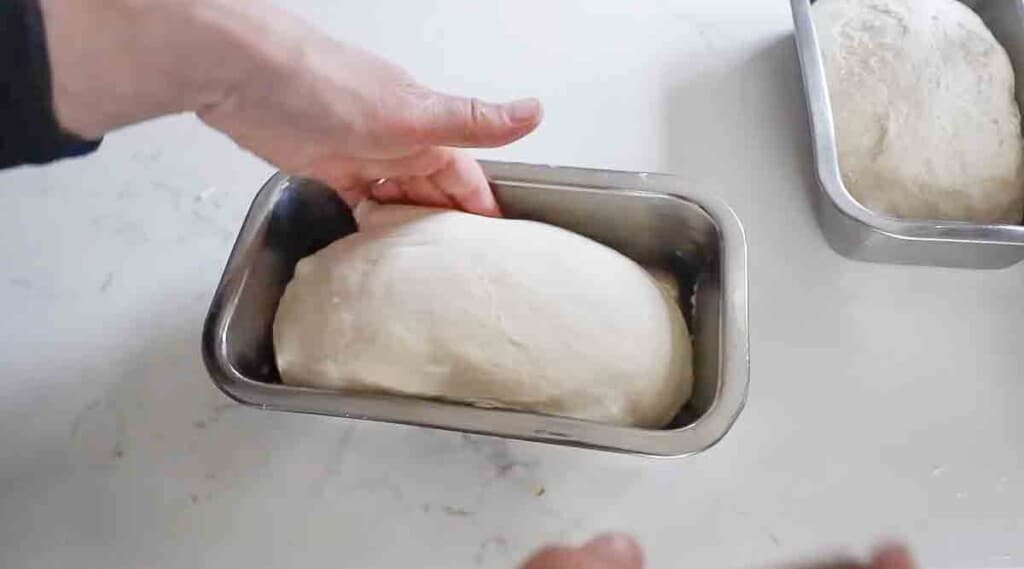
Add to parchment lined or buttered loaf pans.
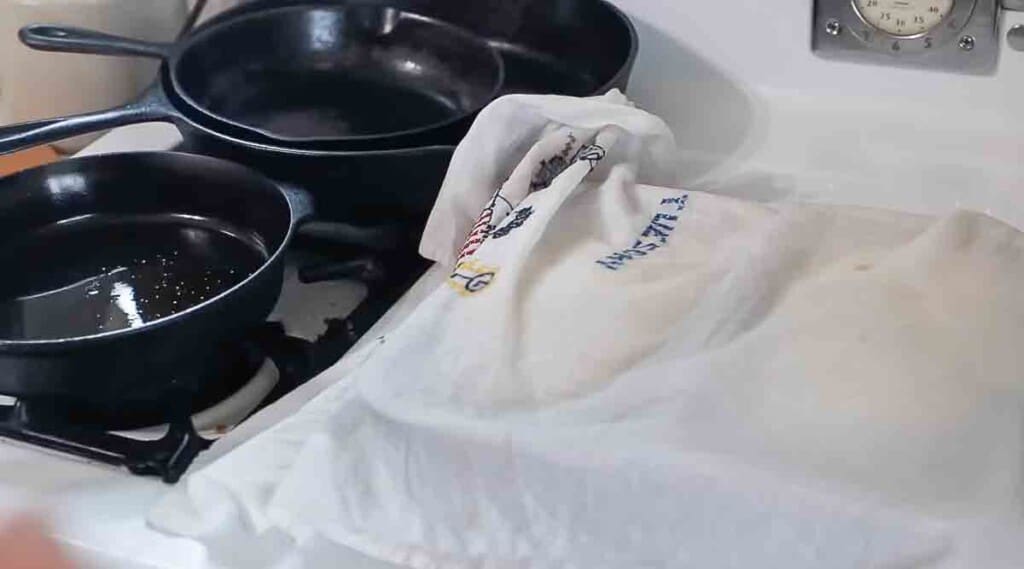
Second rise for 2-4 hours at room temperature, or until doubled. Again this depends on the temp! It could be as little as 1 hour if the house is warm and the starter active. Do not skip this step.It adds volume and strength to the dough.
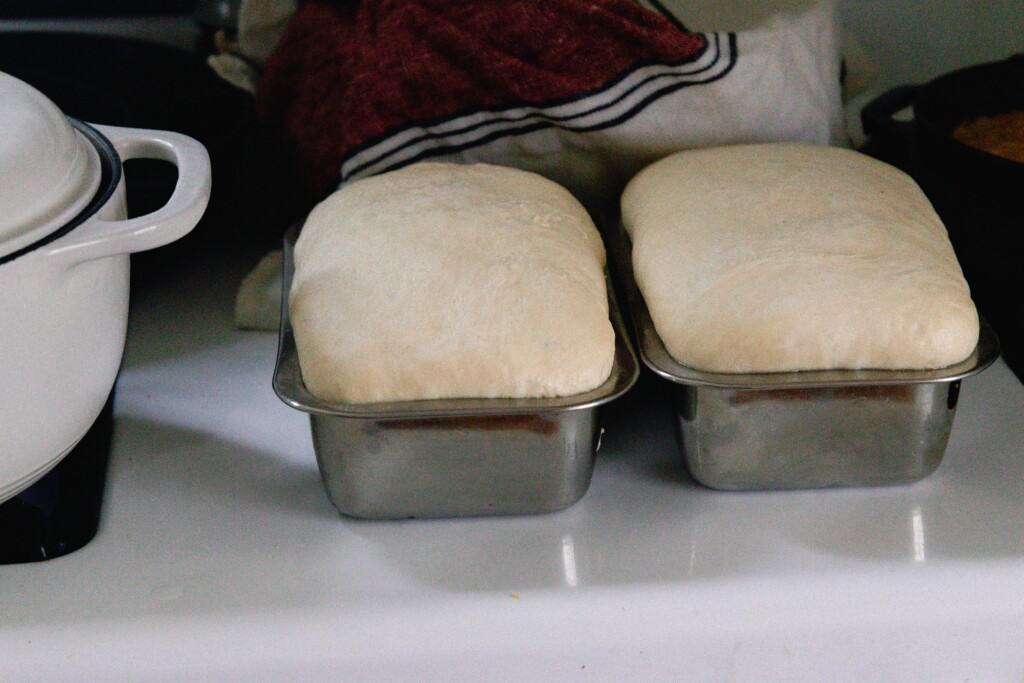
Bake
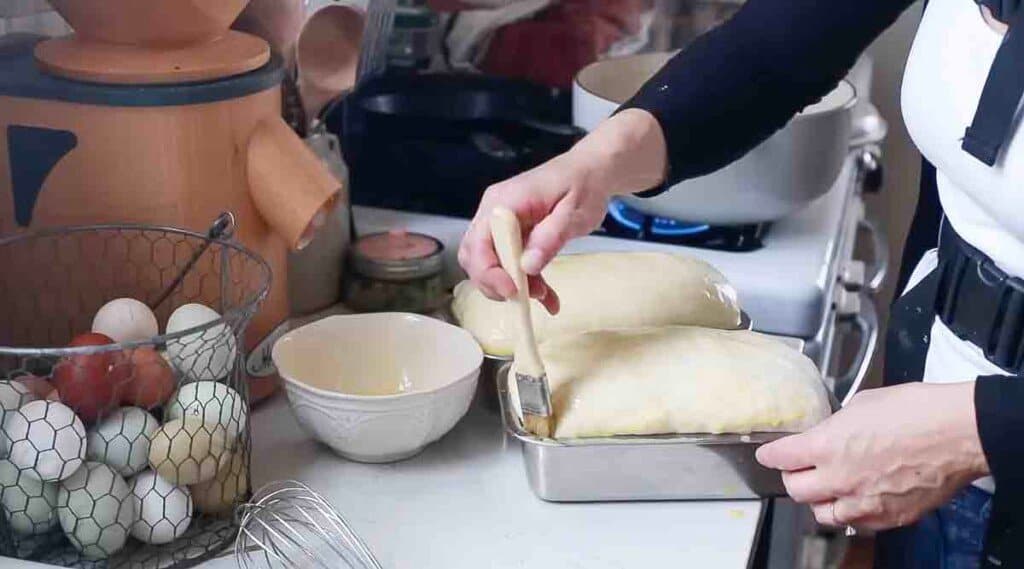
You can add an optional egg wash for more browning.
Bake at 375 for 45 minutes, or until golden on top.
Allow to cool completely before slicing.
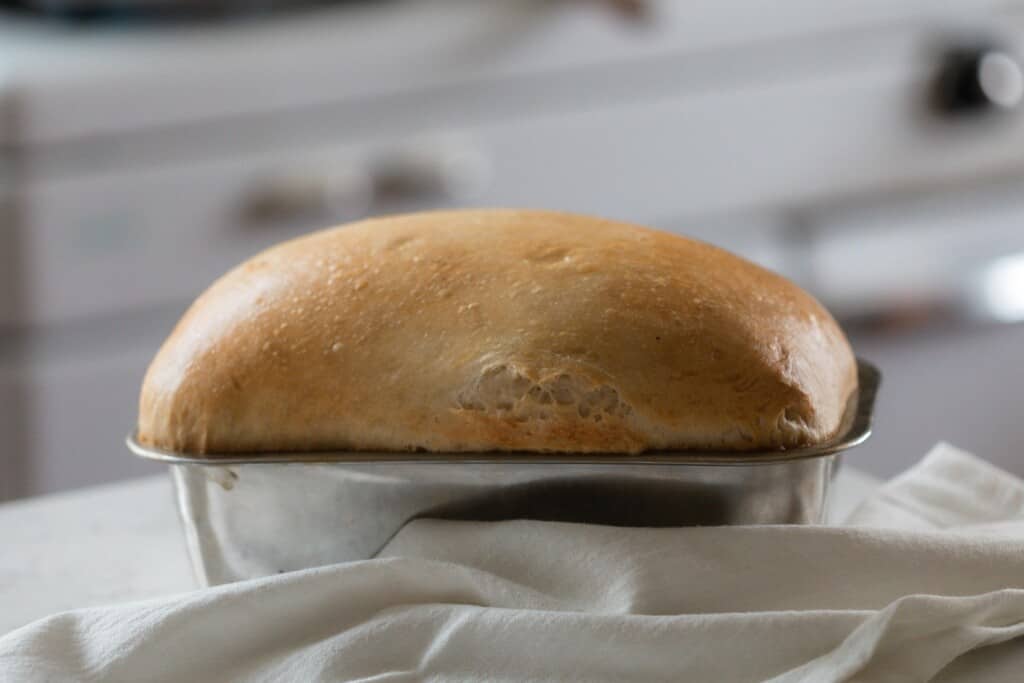
Storage:
Store in an air-tight container for up to five days for best results.
You can also freeze loaves in freezer safe plastic bags for 3-6 months.
Find More Of My Sourdough Recipes:
- Sourdough Zucchini Bread
- Easy Homemade Sourdough Pasta Recipe
- Sourdough Coffee Cake
- The Best Soft Sourdough Pretzels
- Sourdough Brioche
If you try this recipe and love it, I would love if you could come back and give it 5 stars! Tag me on Instagram @farmhouseonboone .
Sourdough Sandwich Bread
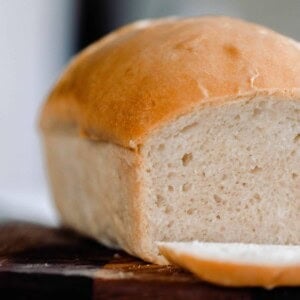
Ingredients
- 1/2 cup butter, softened or coconut oil
- 2 tablespoons honey or sugar, If using sugar, note that it will be 24 g
- 1 tablespoon salt
- 1 cup starter, active and bubbly
- 2 1/2 cups water
- 8 cups all purpose flour*
Instructions
- To a stand mixer, add all of the ingredients. I like to add the flour last, so I can add a bit less or more depending on my starter's hydration.
- Knead until dough is stretchy and smooth. You want it to pull away from the sides of the mixing bowl and be smooth and elastic – about 10 minutes. It should pass the windowpane test.
- Allow to bulk rise for 10-12 hours in a warm place like on top of a stove or refrigerator.
- Divide in two equal parts.
- Shape by rolling the dough flat into a rectangle and rolling it up.
- Add to parchment lined or buttered loaf pans.
- Second rise for 2-4 hours at room temperature, or until doubled.
- Bake at 375 for 45 minutes, or until golden on top. You can add an optional egg wash for more browning.
- Allow to cool completely before slicing.
Notes
- *Some people have said making two loaves is too much for their stand mixer to handle. This depends on the type of stand mixer you have. If you have a standard KitchenAid mixer, you may want to halve the recipe and make one loaf.
- Use really soft butter and cube it up so it blends easier.
- Don’t over ferment the dough. It will turn into a wet sloppy disaster that won’t rise well. Still edible. Maybe. It could also be turned into sourdough croutons.
- When making the dough, using a stand mixer makes the process much easier and hands off. You can also do this with your hands.
Nutrition
Nutrition information is automatically calculated, so should only be used as an approximation.
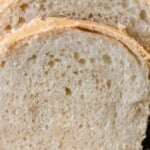
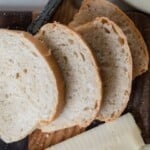


















What size loaf pans do you use to make two loaves of this recipe?
Here’s a link to the loaf pans I use.
Thank you so much. I can’t wait to try this recipe.
Do I use gf all purpose flour if I want it to be gluten free? (Using your gf starter)
Yes.
Can your recipes be done with gluten free flour?
Yes, you a gluten free AP flour.
Should the time change if it’s fermenting on the counter versus fermenting in the refrigerator?
Your explanation wasn’t very clear on this
You will need to ferment on the counter first in order to get your rise. Then you can ferment longer in the fridge if you need to pause the recipe or you want a longer fermented sourdough bread. You can ferment in the fridge for up to 3 days.
On the website recipe if you change from 1X to 2X or 3X the g weights do not change. Just FYI. I just happened to catch it before I started. Have been making this for my kids lunch bread for a while. Can’t seem to figure out why the crust is crumbly and separates. Dough is usually sticky and hard to work with to get into pans once it’s risen enough.
I just made my first starter a week ago and just mixed up this dough. It’s currently on the first bulk rise. Probably a silly question but it took my whole starter to get 1 cup. How do you actually grow your starter if you’re always throwing away half of it?
You don’t have to discard once your starter is established. You can feed your starter as much as you want to. Just keep in mind you have to freshly feed it for it to be active. So, if you had 3 cups of starter in your fridge, to activate it, you’d need to feed 3 cups flour, 3 cups water. Then you’d have approximately 9 cups of starter. So you want to make sure you discard it or use it up before you put it back in the fridge.
Thank you for explaining that! That makes sense. BTW my bread turned out great! So excited it worked for me. I’m officially hooked now. 😊
Rose great and smells great but the top of the bread became very hard and dark from the egg wash did I do something wrong?
No, you didn’t do anything wrong. Maybe your oven rack is closer to the top of the oven than mine?
I’ve made this bread many times and love it dearly. I’m wondering if I can swap out any of the AP flour for whole wheat flour? From the store, not homemade. Will it still turn out or would I need to do anything different?
Yes, you can! I like to swap 1/2 of the AP flour for whole wheat.
can you just replace the whole thing with whole wheat flour instead of just half. have you ever tried it? also does the flour actually ferment enough to call this sourdough. I don’t think the amount of flour used and starter used can actually ferment that much flour to truly ferment it. Im a Trim healthy mama and trying to figure out if this is on plan sourdough doing it this way. thanks!!
Yes, you can use 100% whole wheat. It is more dense and less fluffy!
I like lots of seeds in my bread I have this called everything bagel seasoning if I can use it how much and when and do I remove some of the flower
I would use no more than 1/4 of a cup! You can keep the flour amounts the same.
Sorry , I just asked about what to cover the loaves with when on the bulk rise, but I meant on the second rise for the 2-4 hours when they are in the loaf pans, and likely to rise over the edge. You have in photo of a dish towel, but how do you make sure towel does not stick to the top of the loaves ?
A damp dish towel will not stick
When the 2 loafs are doing the bulk rise on the counter, what can I use to cover them with that will not stick to the dough and damage the top of the loafs ?
A wet tea towel works great.